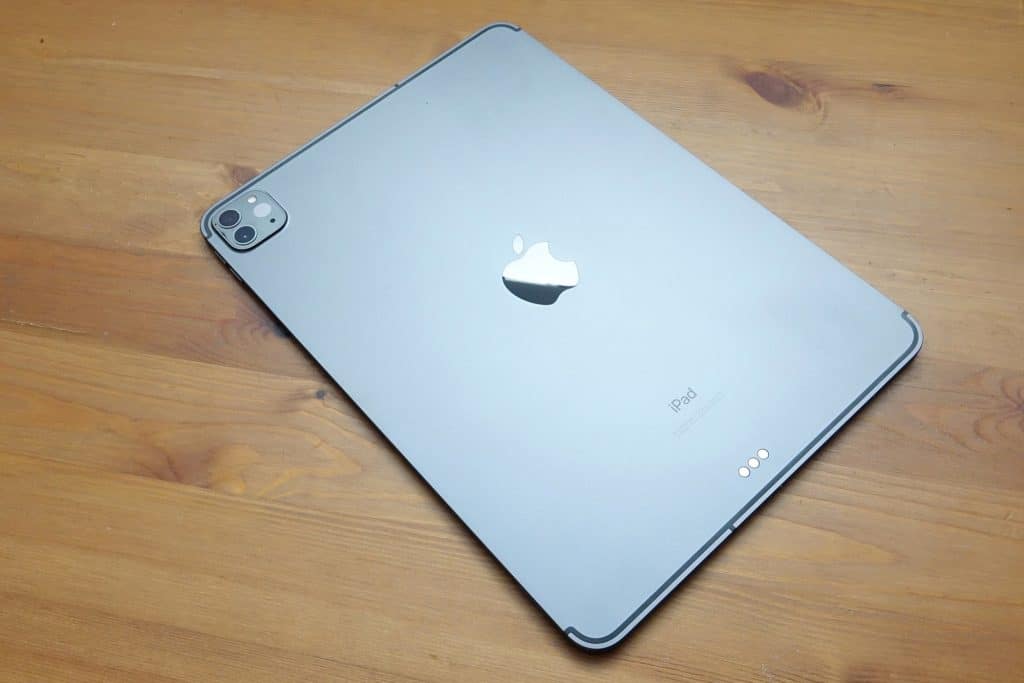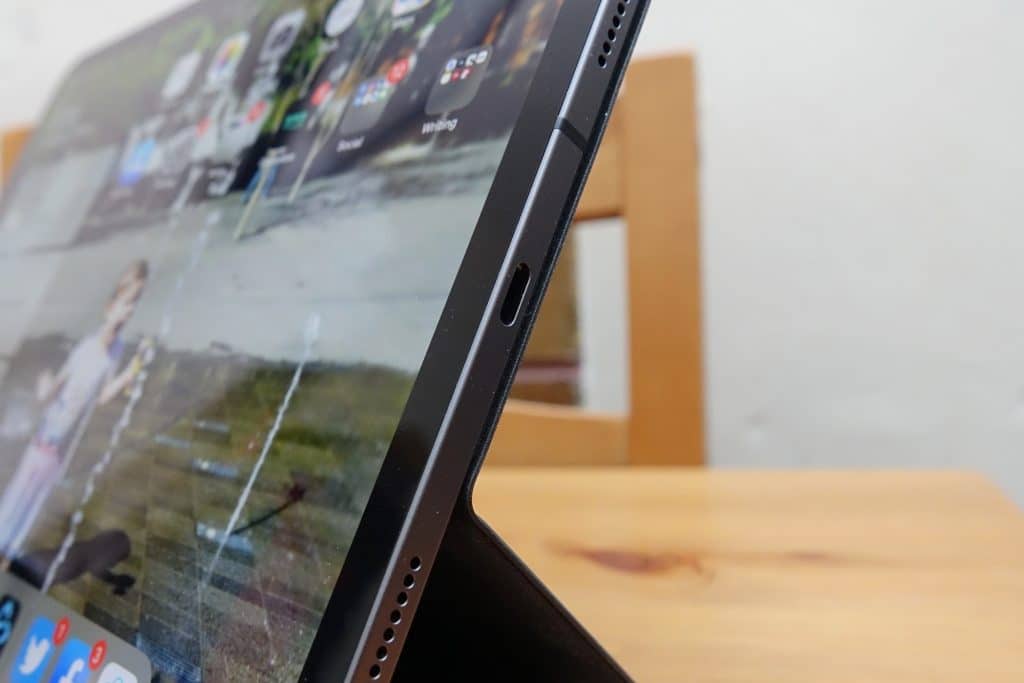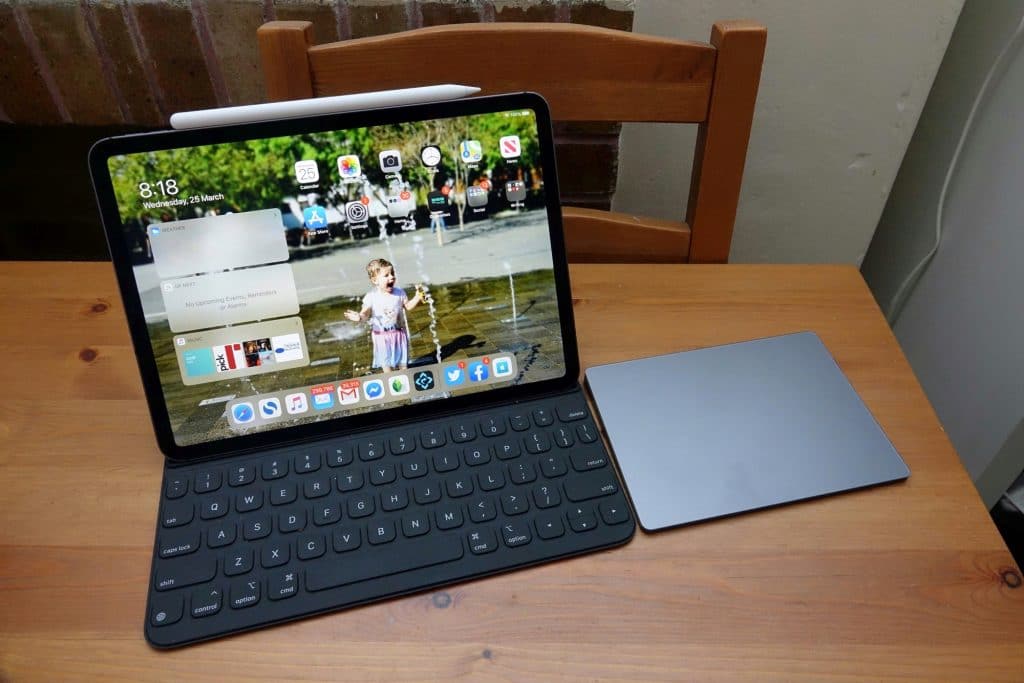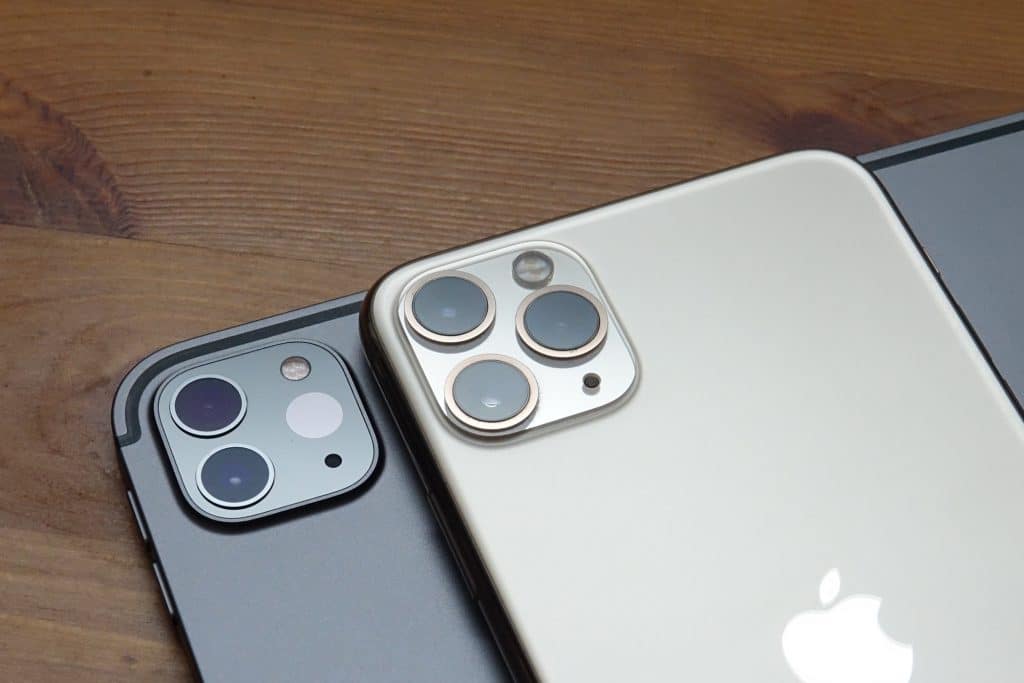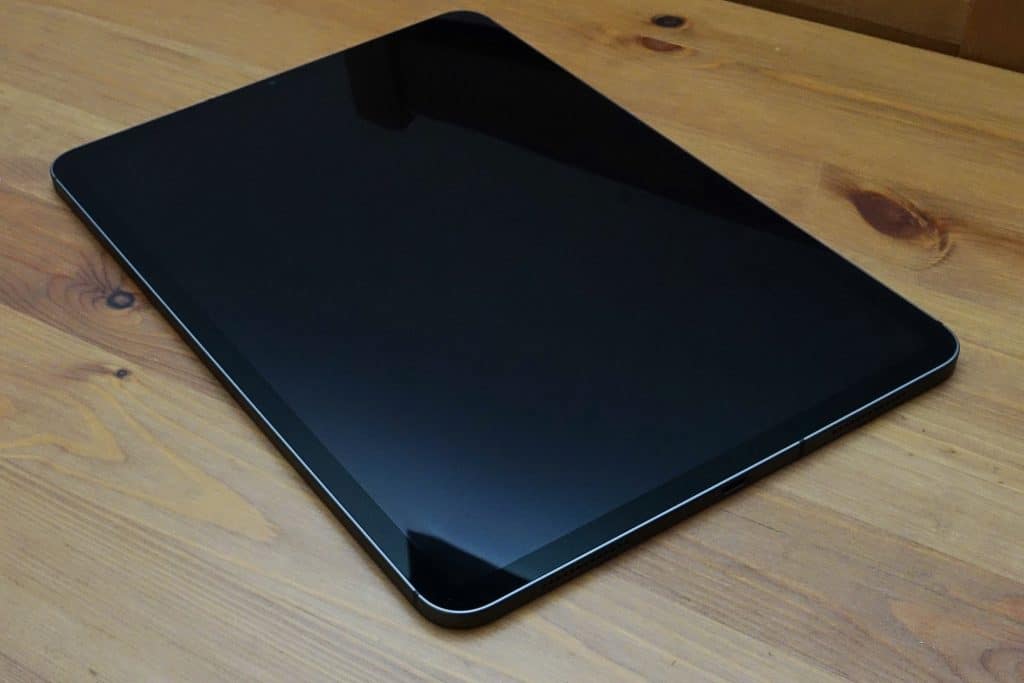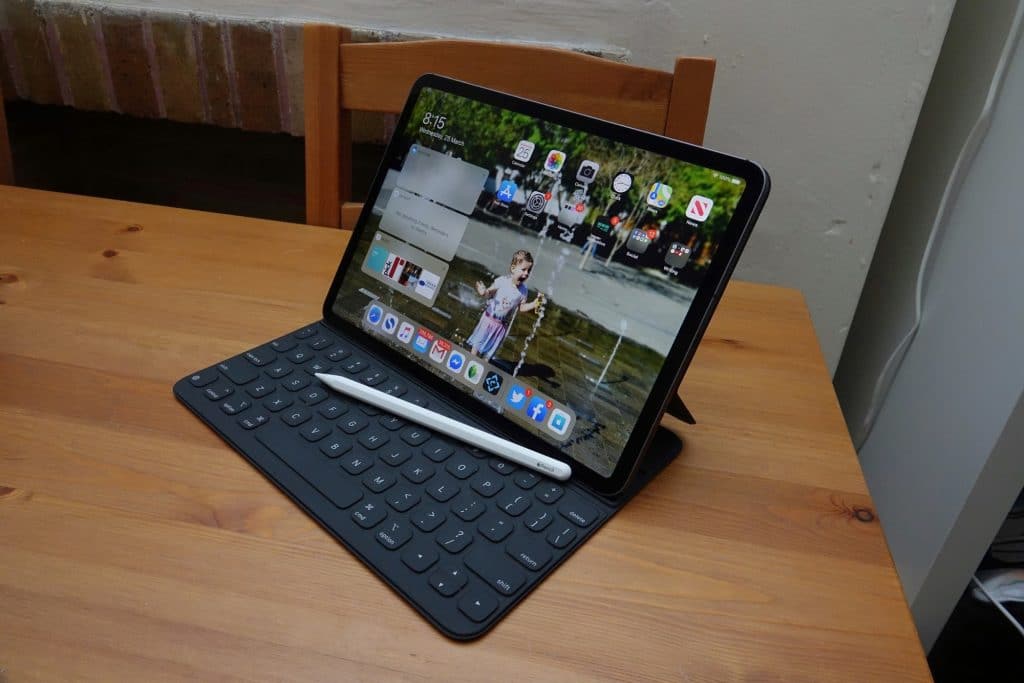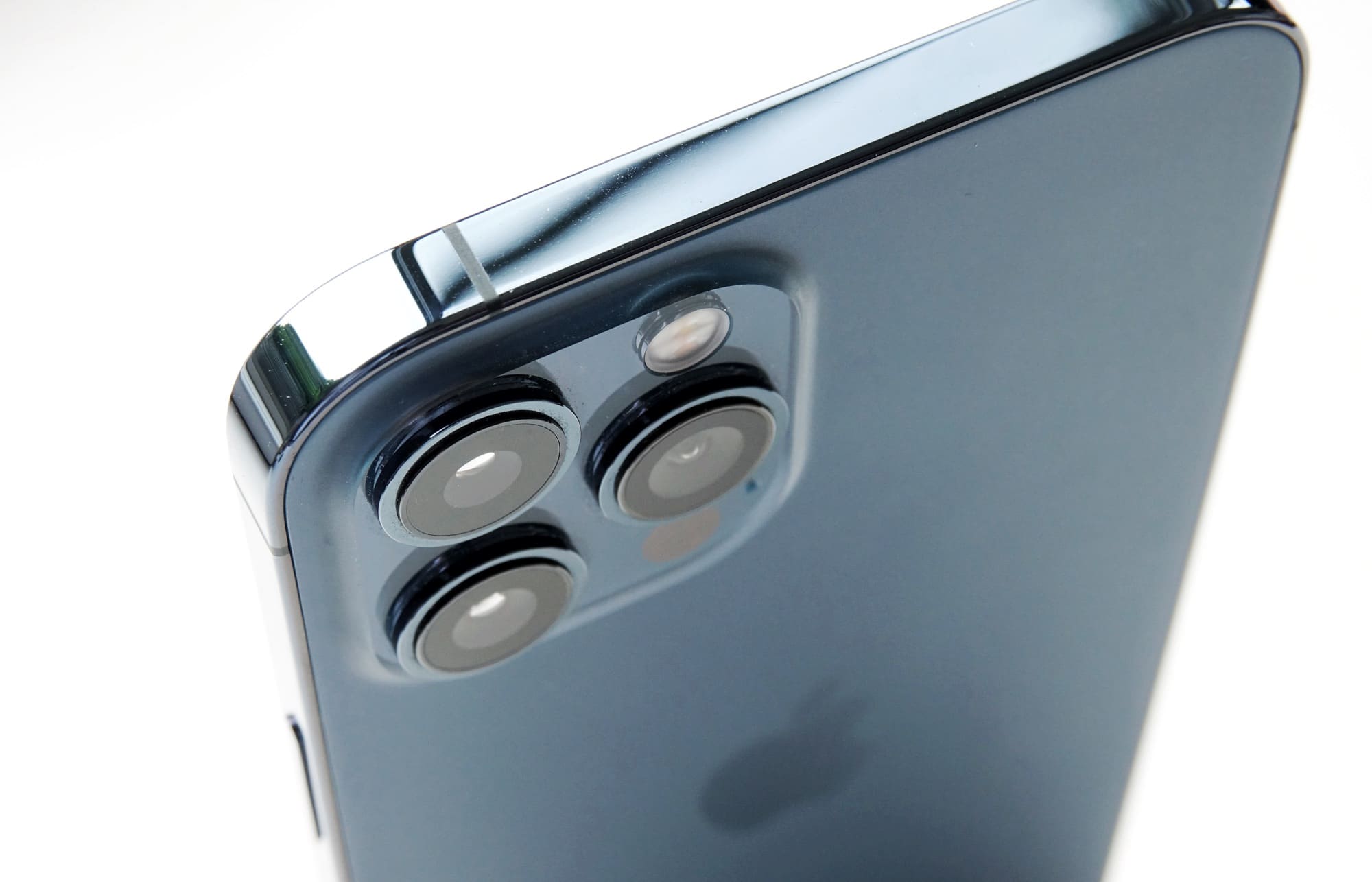Quick review
The good
The not-so-good
It’s been over a year since Apple last updated its high-end iPad, but now it’s here. The 2020 iPad Pro sure looks similar, yet there are some changes that keep this thing in the top spot not just now, but likely a while to come.
Design
A new iPad model might typically signal a change in design, but that’s not what you’ll see in the 2020 iPad Pro. Rather, the look and feel is practically identical, down almost to the weight.
It’s the same metal encased body with the 11 inch (or 12.9 inch if you opt for the big one) screen, though the 11 inch 2020 iPad Pro is marginally heavier, with a few grams difference between the new model and the old one.
Not that you’d ever realise, because the two are so close, it’s hard to notice any difference between 468 grams and 473. This is all largely academic.
As was the same in the 2018 iPad Pro that was being sold up until last week, the 2020 iPad Pro is easy to hold, nice in the hands, and just about the slickest tablet you can find today, familiar as it is.
Features
Inside that familiar design, Apple has changed some things, but left others mostly the same.
As such, there’s a new chip, though it’s a modest improvement, updating to the new A12Z over the A12X used in the original model. The difference of speed isn’t likely to be a major one, but rest assured, Apple is talking about performance in a big way, sporting eight core of processing and eight core of graphics, delivering what the company says is the highest performance of any iPad so far.
Storage now starts at a minimum of 128GB — because the previous minimum of 64GB was a little insane — and now you’ll choose between 128GB, 256GB, 512GB, or 1TB — and the choice of either WiFi or WiFi with 4G.
The WiFi has seen modest improvements, with the 2020 iPad Pro supporting WiFi 6, which means it includes 802.11/a/b/g/n/ac and 802.11ax, making it a little faster than the 802.11ac maximum of the older iPad Pro, while 4G is meant to be a little faster, too.
However the connections haven’t changed, and you’ll still only get USB Type C here, as well as that magnetic smart connector on the back. Apple has said the smart connector works with the Smart Keyboard Cover folio like it does on the older model, but has noted in its specs and comparison that the 2020 iPad Pro will support the new Magic Keyboard while the 2018 model would not. We’re led to believe the older model should support the Magic Keyboard, though, so expect this page to change later on.
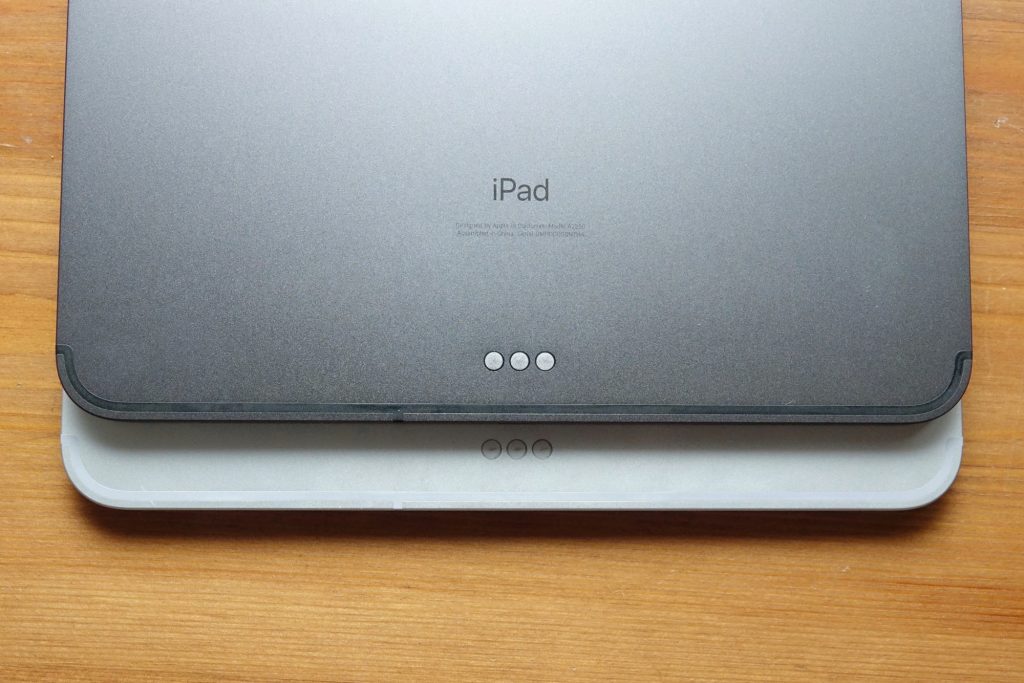
That might be one reason to consider an upgrade, but it won’t be the only one, with an upgrade to the camera on the back, now sporting not just one camera, but technically three. Two of these are obvious cameras, with a 10 megapixel F2.4 ultra-wide camera joining the 12 megapixel F1.8 standard wide camera, as well as a LiDAR sensor for capturing and understanding the scene of the camera.
Apple has also included five microphones, handy if you’re someone who talks at or singes to their iPad, with music and audio production now closer to being the remit of the iPad, not just Apple’s larger computers.
And there’s support for a 120Hz screen in the device, making it clear to browse and scroll on, potentially providing clearer gaming alongside.
You still only get one port to work with — the USB Type C at the bottom — but in a world moving further away from physical ports, this is hardly a surprise. Apple does include its special magnetic port at the back, though, and depending on if you pick up the accessories, it will change how you use the tablet.
In-use
Much like the last generation of iPad Pro, there are a few ways to use Apple’s highest end tablet, with your finger being the main one or an Apple Pencil if you choose to.
There’s also a choice of a keyboard this time, though at the time we reviewed the 2020 iPad Pro, the newer magnetic Magic Keyboard wasn’t available yet, with release not due until May. For now, if you want to type on the iPad Pro, you’re likely going to rely on an external wireless keyboard, a wireless keyboard case like the one Brydge makes, or even the Apple Smart Keyboard Cover that attaches to the magnetic port at the back of the iPad Pro.
That’s what we used, and it made the iPad Pro more like a laptop quickly and easily, though there’s now another way to bring that laptop-like control for the iPad.
For the first time ever, Apple is supporting mice in iOS, specifically allowing mouse support on iPadOS. Mouse support isn’t going to be limited solely to the new iPad Pro, and if you have any iPad that supports the latest edition of iOS 13, you’ll find support, too. However the 2020 iPad Pro comes with the support out of the box, meaning we could test it here.
The good news is if you rely on a mouse to make your website do specific things, particularly if your content management system (CMS) and platform relies on a hover state, you’ll be happy: whether you use a mouse or a trackpad, iPadOS works a treat with the feature, giving you a cursor you can use.
This feature also means a combination of parts turns the iPad Pro into as close as you get to a small yet powerful laptop as it gets. The smallest laptops tend to pull back on the amount of power they have, but the 11 inch iPad Pro paired with the Smart Keyboard Cover and a wireless trackpad give you the usability of a larger laptop paired with the screen of a smaller one, and a whole lot of grunt inside.
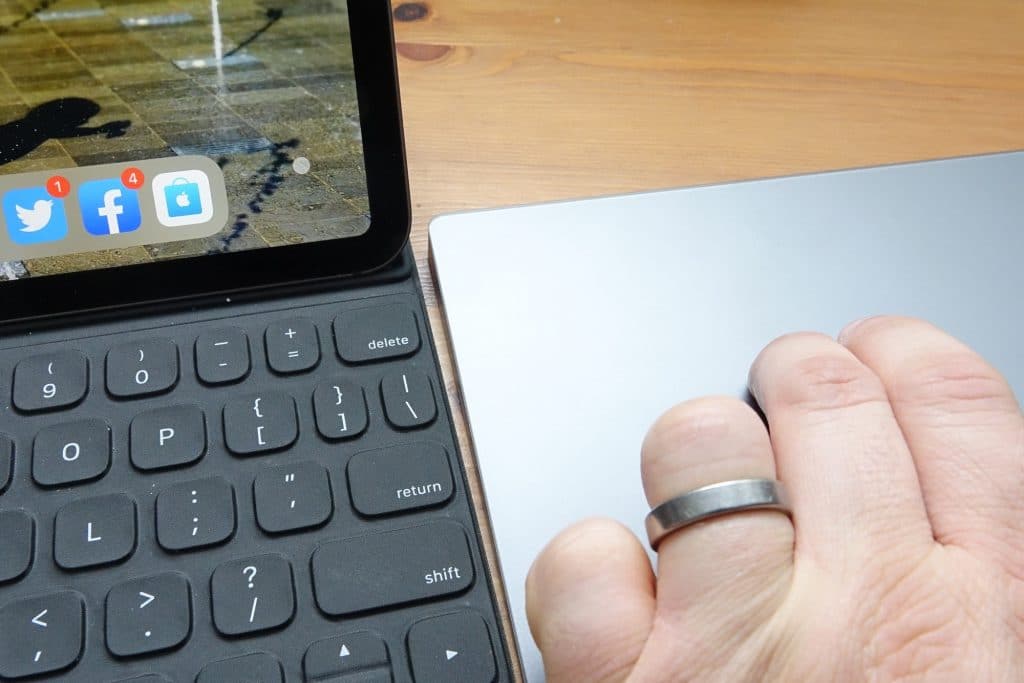
Performance
So let’s talk about that grunt, because it’s just a little different from what you saw last year, even if it’s not a huge amount.
The 2020 iPad Pro sports a different chip from the iPhone 11 range, opting for the A12Z instead of the A13 chips. We’re talking model numbers right now, so instead let’s properly talk shop.
In fact, one of the main differences is a number that makes a difference for graphics, with eight core of graphics processing power, a first for the iPad range. That’ll make a difference if you’re gaming and processing augmented reality applications, which is really where the iPad Pro should come into its own.
The screen supports 120Hz, as well, which means you’re getting smoother scrolls and cleaner animated graphics, handy if you’re dealing with more video altogether.
Seeing that performance first hand compared to its sibling, however, is next to impossible. Benchmarking reveals a notable improvement on the graphical side of things compared to both the 2018 A12X iPad Pro and even the iPhone 11 range with the A13 inside, while the CPU is strong.
Synthetic benchmarks aside, regardless of what you run here, expect the hardware to keep things going. It’s the fastest iPad around, and not going to let up for the next year or so, and possibly beyond, even if you struggle to see it.
Camera
While you’re unlikely to notice the difference in performance, the camera is where things get really interesting.
It’s actually the first obvious difference between the models, with a square camera module on the back not unlike what’s found on the iPhone 11 Pro and Pro Max phones. Similar, but not the same.
Like the iPhone 11 Pro Max we reviewed last year, there are three cameras. Unlike that phone, however, the telephoto camera is missing in action, with Apple adopting a totally different camera technology. You see you’re probably never going to use the iPad as a camera the same way you would an iPhone, so the telephoto would be mostly out of place here.
Instead, Apple is adopting a different approach for the camera, pairing an ultra-wide and standard wide camera alongside a special LiDAR camera. A little bit different, “LiDAR” stands for “Light Detection and Ranging”, and is used to get a data map of the room and objects it’s aimed at. LiDAR isn’t an altogether new technology, and we’ve seen it grace at least one phone prior, but it’s here in a different capacity.
On the Pixel 4 and Pixel 4 XL last year, LiDAR was used as a way to measure and monitor gestures for contactless control of the phone, a concept that arguably wasn’t as useful as it sounded.
Over on the iPad Pro, Apple is using LiDAR to improve the tablet’s understanding of the scene being captured by the camera, detailing the space between objects, which provides a data-based understanding of what the cameras see. It’s a combination that should provide a better approach for measurements in augmented reality apps, but right now does very little.
Unfortunately at launch, there are no apps beyond Apple’s “Measure” app that make use of LiDAR, so judging the use of the technology here is more of something you do on trust. Even Measure doesn’t seem to show much difference, with Apple telling us that it makes it faster, though it’s a hard concept to account for. The idea is the iPad Pro 2020 is effectively more future proofed than your conventional tablet, and will work better in augmented reality, though right now, there’s not a lot of proof as to how.
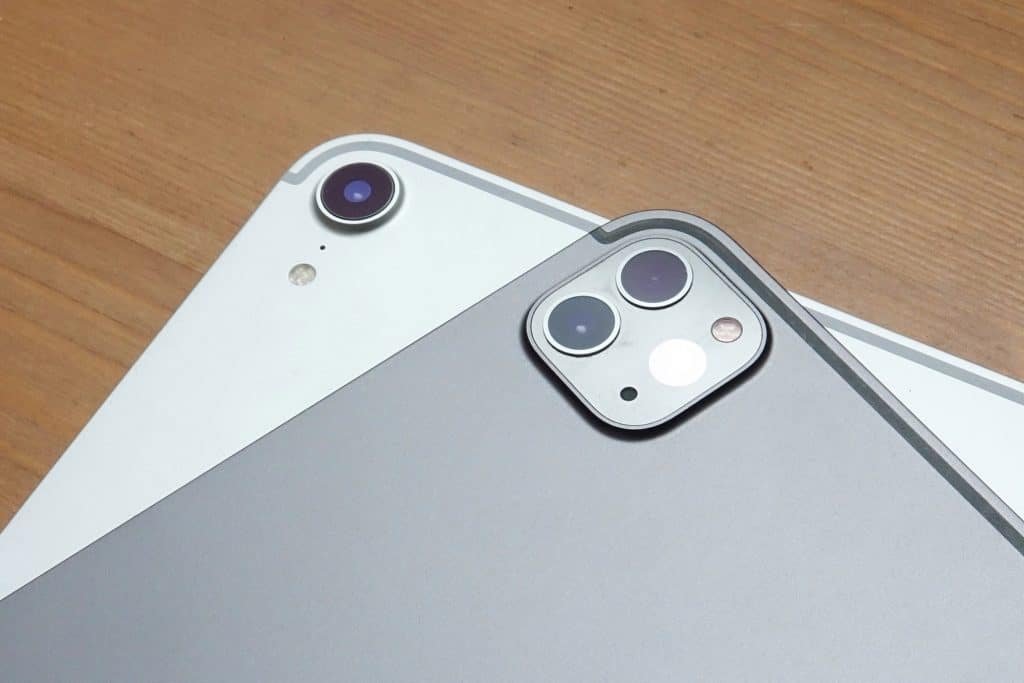
Sound
A section we don’t normally have, we’re adding a section on the iPad Pro’s sound because of what Apple has added this time.
Clearly focusing on the customer who needs decent microphones and audio capabilities, the iPad Pro for 2020 differentiates itself by offering five microphones for recording. Apple calls them studio quality, and they’re definitely decent, but in our brief testing with the new iPad Pro, we’ll stick to using our Rode microphone for studio recordings.
Battery
While there’s a focus on new microphones, the battery is more or less the same. Apple says the number is around 10 hours of life, and that’s roughly what you’ll end up doing, with the iPad Pro needing a nightly charge in our tests if you use it regularly.
Use the 2020 iPad Pro a little less, and you may find a maximum of two days of life, though you’ll need to restrain the use to around 3 to 4 hours per day maximum to hit that. Unsurprisingly, the more you use the iPad Pro, the more likely you’ll need to charge it, though understandably apps and games that use the hardware more will also churn through the battery life.
Value
We can deal with the battery life, even if we’d like it to be better. However one thing that isn’t particularly friendly is the price, thanks in part to the iPad Pro just being so high priced, and not far from where the new MacBook Air sits.
In Australia, the 2020 iPad Pro starts at $1329 for a 128GB 11 inch model, costing $1499 for the 256GB variant ($100 less than the MacBook Air), $1839 for the 512GB, and $2179 for the 1TB 11 inch 2020 iPad Pro.
We reviewed the 11 inch 2020 iPad Pro, but if you decide to opt for the bigger model, the 12.9 inch starts at $1649 for 128GB, changing to $1819 for 256GB, $2159 for 512GB, and $2499 for 1TB.
And those are just the WiFi models, because if you want WiFi with 4G, add $250 to the cost, because that appears to be the cost locally.
We’re not going to say that there’s no value here, either, because that’s not the case. The 2020 iPad Pro models deliver a lot of power, some future-proofing for AR cameras, and a heap of style and design other tablets just aren’t hitting. It’s about the most premium tablet you can find.
But they are definitely not inexpensive, and when you factor in the extra cost of the Smart Keyboard Cover folio at $299 or $339 depending on the size (11 or 12.9 inches, respectively), you start talking about a minimum of $1628 for a 128GB tablet that can work as a laptop. That’s a lot more than most would expect for a portable 11 inch computer, though worth noting that it’s not your ordinary tablet or laptop, and sits in line with being a little higher grade.
If what you’re looking for is a laptop over everything, you might want to consider something like a MacBook Air, but if a tablet that can handle both computer work as well as the multimedia and apps made for iPad, we can see why you might be inclined to spend up. Creatives probably don’t need convincing, either, as the optional extra that is the Apple Pencil helps the package, making it something to draw on, too.
Sure, it’s expensive, but at least there are reasons why.
What needs work?
But while the price is prohibitive, the biggest issue with the iPad Pro isn’t the cost, but rather the reason to update, because if you have an iPad Pro from 2018, there’s very little reason to make the jump to this one.
The inclusion of LiDAR is very cool, but we haven’t seen uses of the technology just yet, making it rather irrelevant for most people. There will come a time when it matters, but launch just isn’t it, hampering the need to update.
In fact outside of the marginal improvement to performance, to microphones, the cameras, and the update to a 120Hz screen, we’d bet that no current iPad Pro user would notice a difference. You see it in the screen when you scroll, the recorded sound, the ability to handle AR, but it’s probably not enough to make an upgrade from the old iPad Pro to the new one worthwhile.
Rather, the 2020 iPad Pro feels focused on the new iPad user looking for a little more from their portable. Maybe you’ve outgrown the standard iPad or you’re after a more portable computer than a laptop. We can definitely see the argument, even if it’s not one previous iPad Pro owners are likely to partake in.

There’s also one other omission, and it’s surprising given we’re several generations into the iPad and iPad Pro, and Apple still hasn’t included it: water resistance.
The iPhone has offered water resistance for a few generations now — since the iPhone 7 and onwards — and we’ve seen Sony tablets with water resistance, so we know it can be done. This is the most premium of the iPad models, and yet it still lacks water resistance, which feels like it could be included in some degree. The iPhone 11 Pro and Pro Max are IP68, which means you can wash them off if you need to, but if you get a bit of flour or dust on the iPad Pro, you can’t there.
We’re not talking about the iPad Pro needing extreme water resistance, but something would have been beneficial for the best iPad in the line-up, for sure.
Final thoughts (TLDR)
When all’s said and done, Apple’s 2020 iPad Pro is a fantastically premium tablet, albeit one that costs serious dollars.
Built for creatives and folks looking for the best, the iPad Pro 2020 definitely holds pole position for tablets, delivering the sort of performance and capability you’ve come to expect from premium devices.
We’re not sure there’s a whole lot of difference between the old and the new, but that may not matter. Ultimately, if you’re looking for the best tablet around with a bit of future proofing, this is the one to look at. Recommended.





